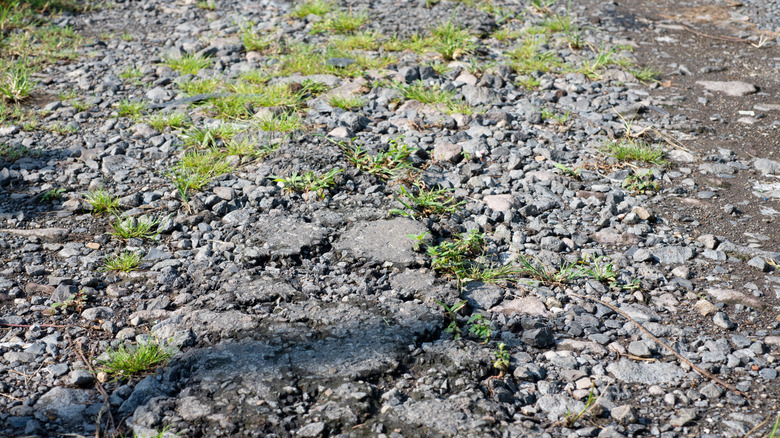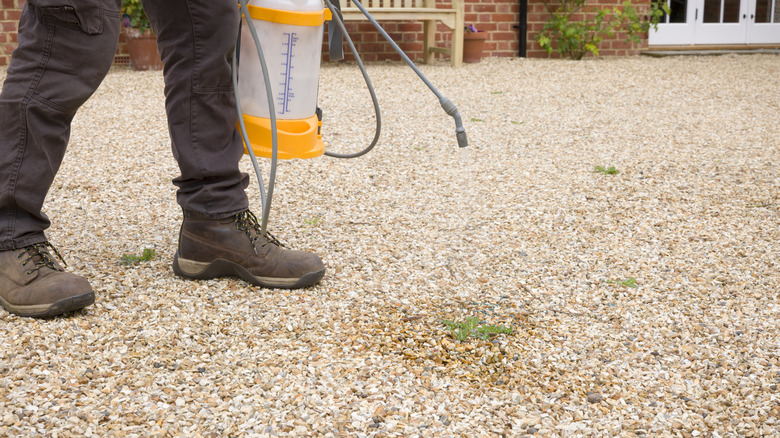The Easy Solution For Treating And Preventing Weeds In Gravel
We may receive a commission on purchases made from links.
Tired of weeds popping up in your gravel driveway like uninvited guests? Well, you'll be happy to know there is one tried and true way that you can kick these guests out and banish them back to the underworld where they belong. Every homeowner or grower has their preferred way of getting rid of weeds in their gardens or driveways, but there is one simple product many owners run to for getting rid of those pesky weeds beneath gravel layers and staving off new ones: baking soda.
It's no secret that baking soda is a super versatile cleaning tool, as it's often recommended for various cleaning tasks around the home, from toilet bowl scrubbing to stainless steel cleaning, baking soda seems to be a household hero. And since it's already in most kitchen cabinets, it's a cost-effective, no-fuss solution you can apply without a trip to the store. It also has a low impact on the environment, unlike many store-bought weed killers.
Why does it work, you ask? Baking soda works as a great weed zapper because it essentially draws out all the moisture from the plants, due to its chemical composition — in essence, it acts as a desiccant. The buildup of baking soda (aka sodium bicarbonate), which has a high sodium level, also degrades soil quality, which prevents weeds such as thistle, crabgrass, dandelions, and other common garden weeds known to grow in gravel areas. So keep reading to get the scoop on how and when to use your trusty box of baking soda to give those annoying gravel weeds the boot.
How to use baking soda for weeds and additional tips
This affordable solution is simple enough to make. You'll need a gallon of water, one cup of baking soda, and a spray bottle or garden sprayer. Add the water and baking soda to the sprayer, and shake it up a bit before every use to ensure the baking soda is dissolved. Some experts believe that the best time to attack weeds is in spring or fall, as this will nip new growth in the bud. Choose a day when there's no precipitation and spray all the weed-growing areas in the gravel.
Try to spray toward the bottom of the weed, as this will help it travel faster to the root. If the weeds are already established, you may need an additional application. Use extra caution when applying near the edge of your gravel toward your lawn or desired plants, as it can be harmful. And to keep new weeds from sprouting, perform this maintenance monthly, paying special attention to those trouble areas.
You can also perform a spot treatment on high-growth areas, except this time, sprinkle dry baking soda on the weeds. After adding the powder, pour a little of your previous solution (or just water) over the area. It's better to buy the baking soda in bulk if you plan to perform maintenance applications, and Amazon has a few bulk options, including this Hznxolrc Baking Soda 11-pound jug. Note that bad drainage could also be causing your weed issues, and mistakes made during gravel installation can cause this, in which case, contacting a professional landscaper can be helpful.

